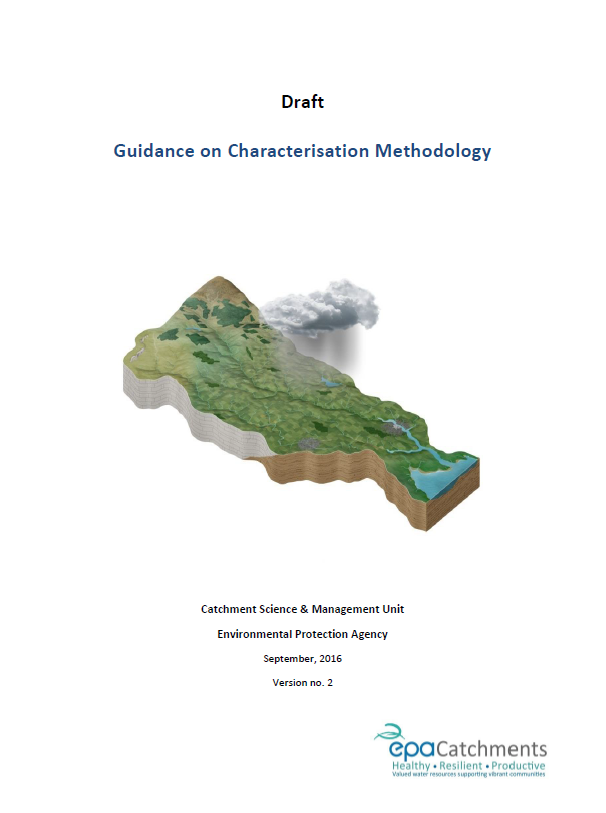Water Framework Directive Guidance on Characterisation Methodology V4.0 – September 2016

| Version | |
| Download | 84 |
| Stock | ∞ |
| Total Files | 1 |
| Size | 2.25 MB |
| Create Date | 11th October 2016 |
| Last Updated | |
The purpose of this report is to describe:
- the role of characterisation in water resources management in Ireland and
- the approach taken to characterising water bodies, subcatchments and catchments.
More extensive information is available in the various publications and guidance documents listed in the References (Section 5).
Background and Context
The Water Framework Directive (WFD) is a major piece of EU legislation designed to protect, preserve and improve the aquatic environment whilst encouraging the sustainable use of water. Characterisation of water bodies is a critical element of the work required under the Directive. It sets the scene for where the water resources are and how they function in the landscape, and provides the understanding of how they are impacted by the pressures caused by human activities. The outcome of characterisation is the identification of water bodies at risk of not meeting their WFD objectives. Article 5 of the WFD, supported by Annex II which contains some of the required detail, identifies three components in the characterisation of water bodies:
(a) an analysis of its physical characteristics, i.e., the physical information that describes the water bodies including water body boundaries, typologies, reference conditions, the geology and hydrogeology of groundwater bodies including the nature of the overlying strata, linked groundwater and surface water systems, etc.
(b) a review of the impact of human activity on the status of surface waters and groundwater, and
(c) an economic analysis of water use.
The WFD requires each Member State to have in place a programme of measures in order to achieve the objectives of the WFD (Article 11). Measures are required to ensure protection of existing satisfactory water resources and improvement of unsatisfactory water resources, with the latter often requiring additional supplementary measures. Monitoring programmes are designed to assess whether the measures are effective. The characterisation process is therefore a major driver in designing appropriate monitoring networks and in implementing measures.
Integrated catchment management (ICM) is a framework to facilitate different ways of working towards a better water environment. It has become the agreed approach to achieving WFD objectives and the sustainable use of water and land resources (DECLG, 2015). ICM involves a series of interconnected steps (see Table 1): i) building partnerships; ii) creating and communicating a vision of ICM; iii) characterising the physical, hydrochemical and ecological components; iv) identifying and evaluating possible management strategies and measures; v) designing an implementation programme; and vi) implementing the programme and making adjustments, if necessary.
| File | Action |
|---|---|
| WFD Characterisation GuidanceV4.pdf | Download |
Download





